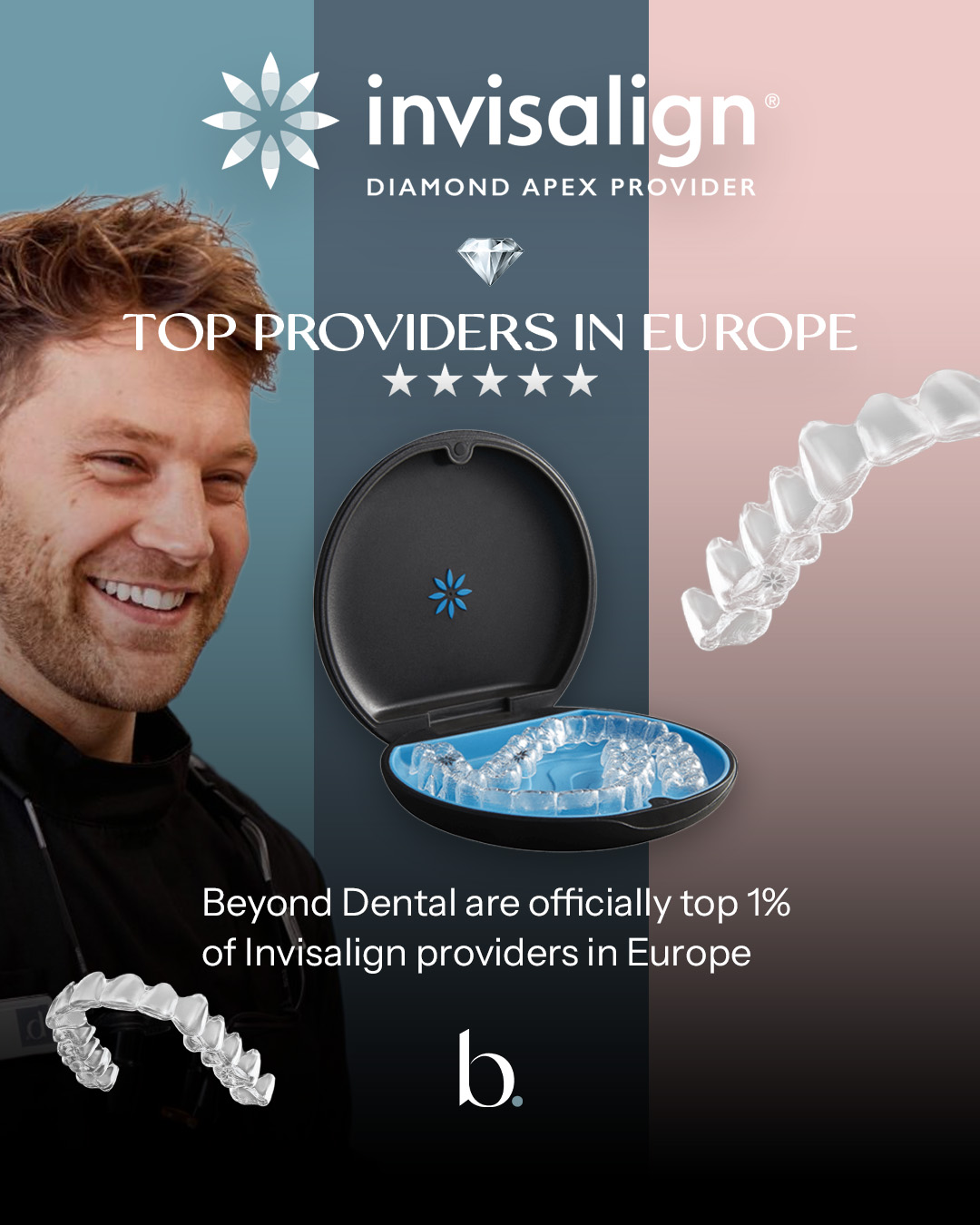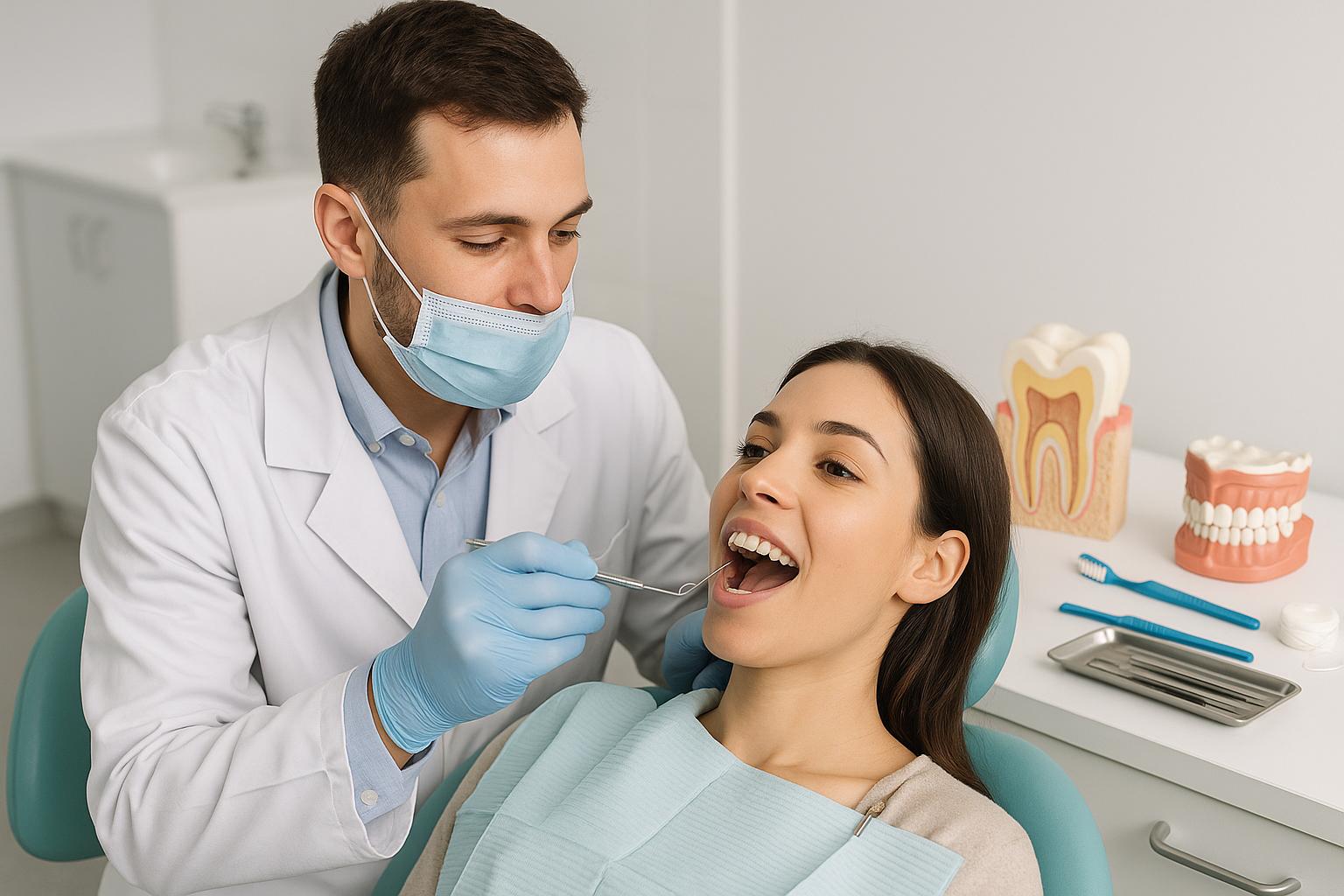The Ultimate Cosmetic Dentistry Handbook
Published
27 June 2025 | 22 min read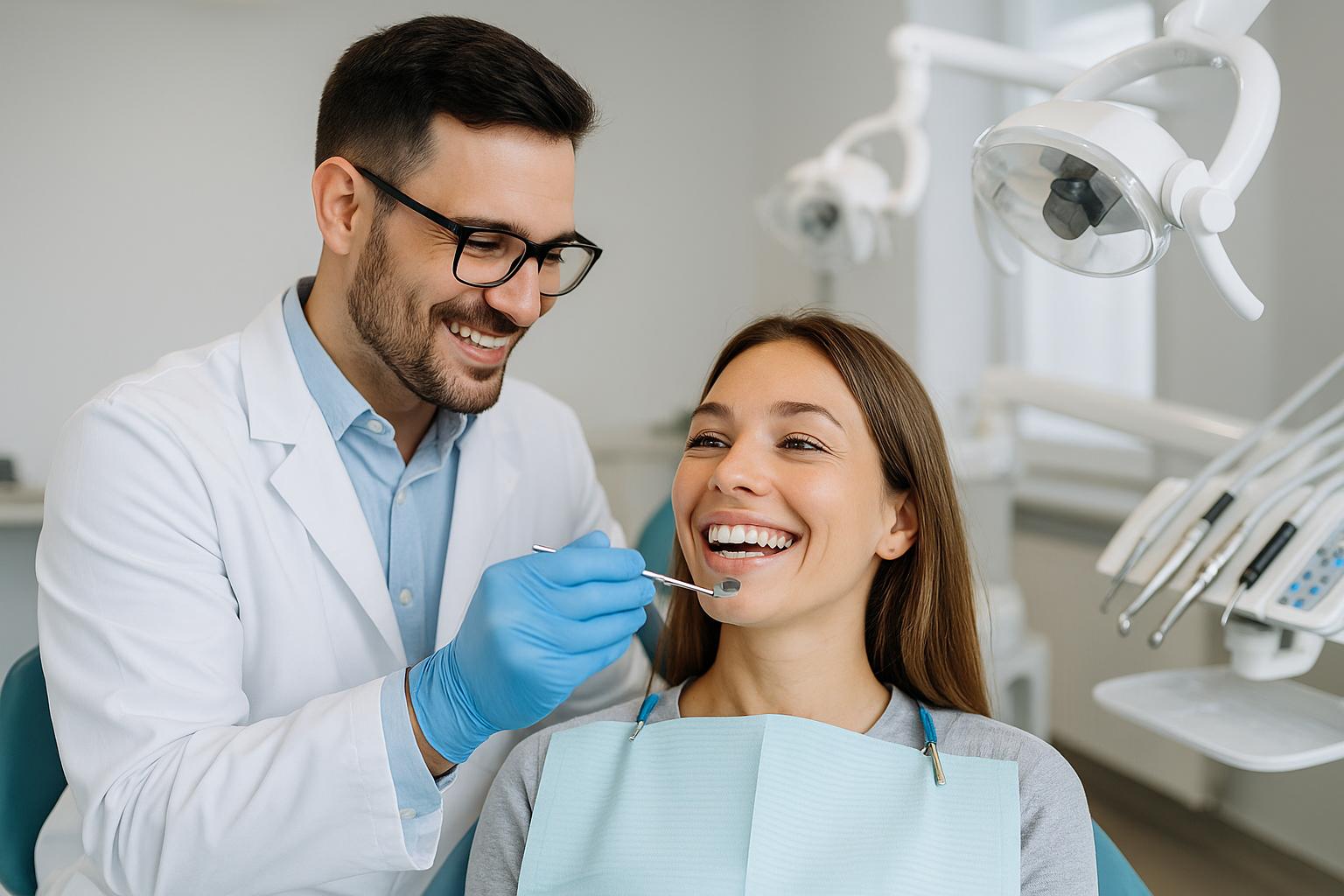
Published
27 June 2025 | 22 min readArticle Summary
Modern Cosmetic Dentistry Techniques and Professional Insights
Cosmetic dentistry is changing faster than ever, bringing new ways to improve our smiles with safer, more natural-looking results. We can now expect treatments that are quicker, more customised, and comfortable than what was possible in past years.
These innovations help us boost our confidence while caring for our oral health.
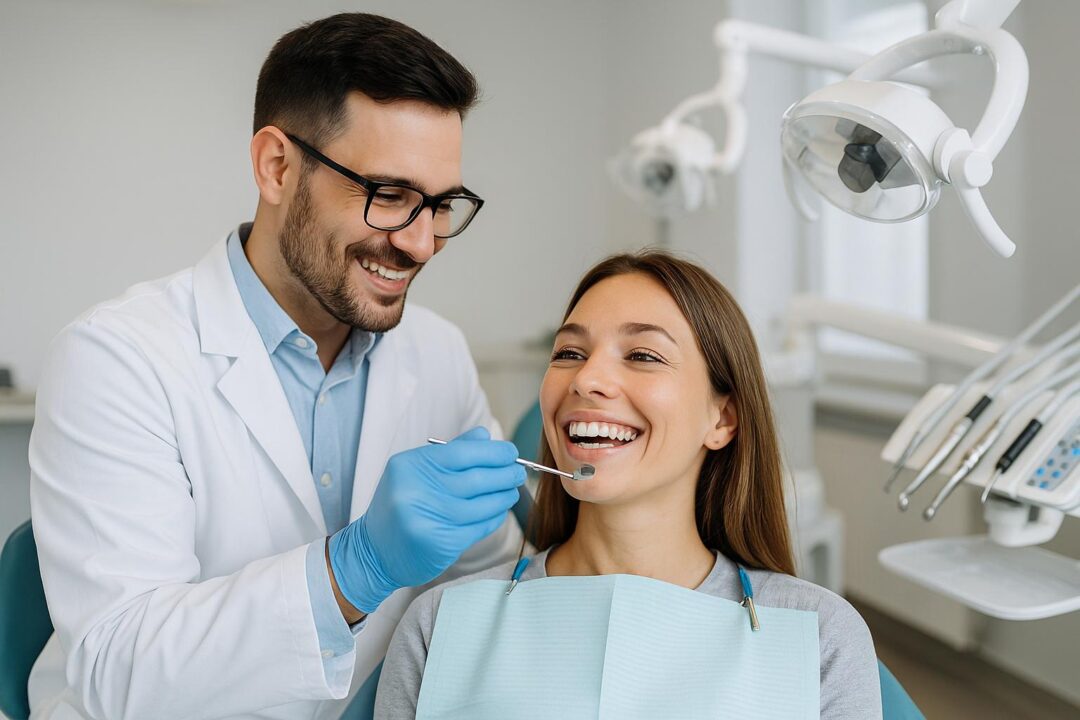
In this handbook, we will guide you through the latest trends and essential information you need to know in 2025. From cutting-edge digital smile design to advances in sustainability, we cover what matters most so we can choose what’s best for our needs.
Key Takeaways
- Cosmetic dentistry treatments and technology are advancing rapidly.
- New approaches offer more personal and minimally invasive options.
- Green and holistic practices are becoming more important in dental care.
Understanding Cosmetic Dentistry
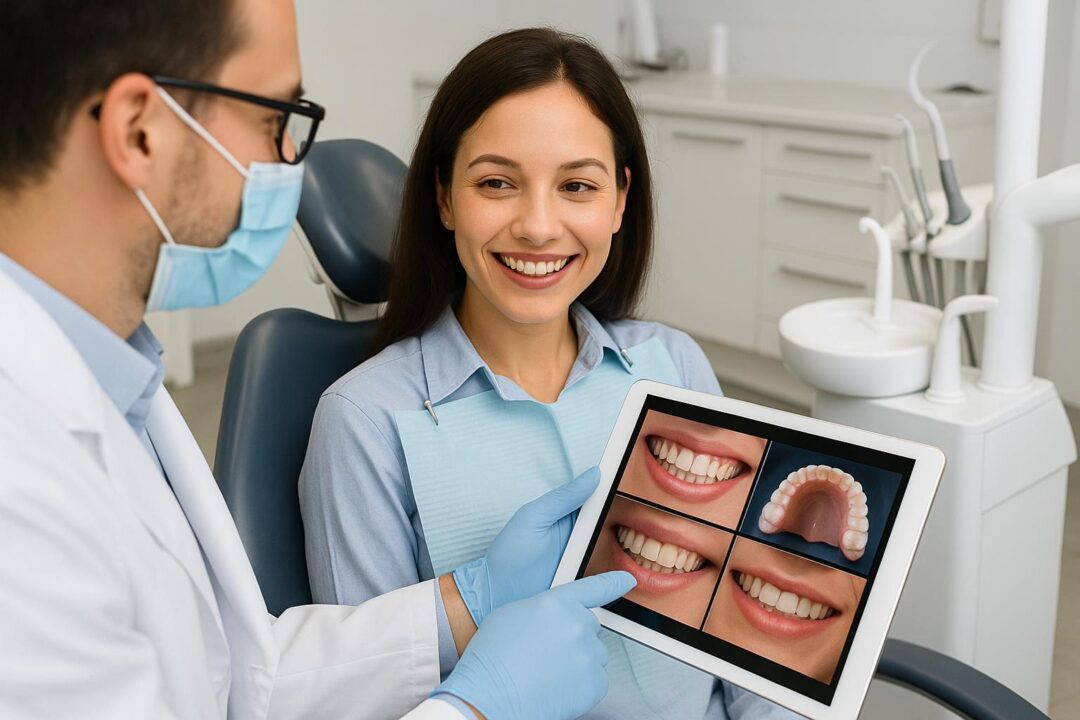
Cosmetic dentistry helps us improve both the look and function of our teeth. It blends dental expertise, artistry, and technology to offer newer, patient-focused solutions in the dental industry.
Definition and Scope
Cosmetic dentistry is a field focused on improving the appearance of our teeth, gums, and smile. It goes beyond standard oral health by addressing colour, position, shape, size, and alignment.
This area covers several dental procedures such as teeth whitening, dental veneers, crowns, bonding, and clear aligners. The main aim is to ensure our smile enhancements look natural while also protecting tooth integrity.
Dental professionals often use digital tools to design personalised treatment plans. As cosmetic dentistry grows, it now overlaps with restorative care, helping us fix dental issues while boosting our confidence.
Historical Evolution
Cosmetic dentistry has seen significant changes over the decades. In the early days, options were limited and mainly focused on whitening treatments using primitive materials.
Gold crowns and amalgam fillings were common, but these did little to improve the look of a patient’s smile. With time, advances in materials and techniques allowed us to offer porcelain veneers and tooth-coloured fillings.
As the dental industry grew, dental procedures became safer, quicker, and more affordable. Modern digital technology has revolutionised this space.
We now rely on computer-aided design, 3D imaging, and even artificial intelligence for planning and previewing cosmetic outcomes. This evolution has made cosmetic dentistry more precise and accessible.
Key Benefits
Cosmetic dentistry offers a range of benefits that go beyond surface appeal. A brighter, well-aligned smile can positively impact our social interactions and self-image.
Restoring chipped or missing teeth also helps with chewing and speech, supporting better oral health. Dental professionals now use less invasive methods and stronger materials to create lasting, natural-looking results.
Procedures like teeth whitening or clear aligners are often quick and require minimal recovery time. Certain cosmetic treatments can help prevent further dental problems.
By correcting bite issues or closing gaps, we lower our risk of tooth decay or gum disease while achieving our ideal smile.
Current Trends
Current trends in cosmetic dentistry show a strong influence from digital tools and artificial intelligence. Digital smile design allows us to visualise possible outcomes before any procedures begin.
This helps ensure predictable, personalised results for each patient. Requests for natural-looking enhancements have grown, with patients prioritising subtle changes over dramatic makeovers.
Materials like advanced ceramics offer strength and aesthetic appeal, blending seamlessly with our existing teeth. Treatments such as teeth whitening and clear aligners remain popular, while minimally invasive options are now more widely available.
These trends reflect our desire for efficient, comfortable, and discreet ways to perfect our smiles.
Popular Cosmetic Dental Treatments
Cosmetic dentistry in 2025 focuses on strong results, advanced technology, and minimally invasive techniques. Patients want safer materials, custom solutions, and treatments that match both appearance and oral health.
Teeth Whitening Methods
Teeth whitening is one of the most requested cosmetic dental procedures. We have seen strong progress with both in-practice and at-home options, giving us more control over results and safety.
Modern tooth whitening uses LED technology and high-grade gels that can safely lift stains without harming enamel. Advances in sensitivity control mean that whitening can be more comfortable for people with sensitive teeth.
Over-the-counter kits are popular, but professional whitening is far more effective and longer lasting. Many clinics use digital shade guides to track results and plan treatments.
Patients concerned about safety or ingredients can request treatments that use biocompatible gels, which avoid harsh chemicals. Staying up to date on the latest teeth whitening trends helps us offer the safest, brightest smile.
Veneers and No-Prep Veneers
Veneers can transform the look of teeth by covering chips, gaps, and discolouration. Today, ultra-thin porcelain veneers are popular for their ability to look natural and last many years.
The biggest improvement has been the introduction of no-prep veneers. These do not require much grinding or removal of natural tooth structure.
Placement is faster and usually painless. No-prep veneers are especially effective for people who want an improved smile without permanent changes to their teeth.
Porcelain remains the most requested material because it matches real tooth colour and resists stains. For patients who prefer non-porcelain options, composite resins are available but may not last as long.
We can advise the best choice based on lifestyle, needs, and budget.
Dental Crowns and Restorations
Crowns and custom dental restorations cover badly damaged or decayed teeth, protect implants, and restore function. In recent years, materials have shifted towards strong, natural-looking ceramics.
These offer a better blend with real teeth and longer life than older metal-based crowns. We are now able to create crowns using digital scanning and 3D printing, making them more accurate and comfortable than before.
Same-day crowns are available in many clinics, reducing waiting time and eliminating temporary solutions. Custom dental restorations not only repair teeth but can also upgrade their appearance and strength.
Biocompatible and BPA-free materials provide a safer alternative for those who are concerned about allergies or toxins. Staying aware of advanced restoration techniques is key for both our patients’ smiles and long-term dental health.
Smile Makeovers
Smile makeovers combine several cosmetic treatments into a single plan. We start with digital smile design to preview results and decide on the best approach for each person.
A typical smile makeover might use a mix of whitening, veneers, crowns, and even dental implants. All procedures are carefully planned to balance function and looks.
Digital tools now let us show before-and-after images so patients can see projected changes before beginning treatment. Every smile makeover is unique.
Treatments are chosen based on face shape, skin tone, and dental health. With options such as 3D printing and digital smile planning, we can give predictable, natural-looking results tailored to each patient’s goals.
Advanced Smile Design Principles
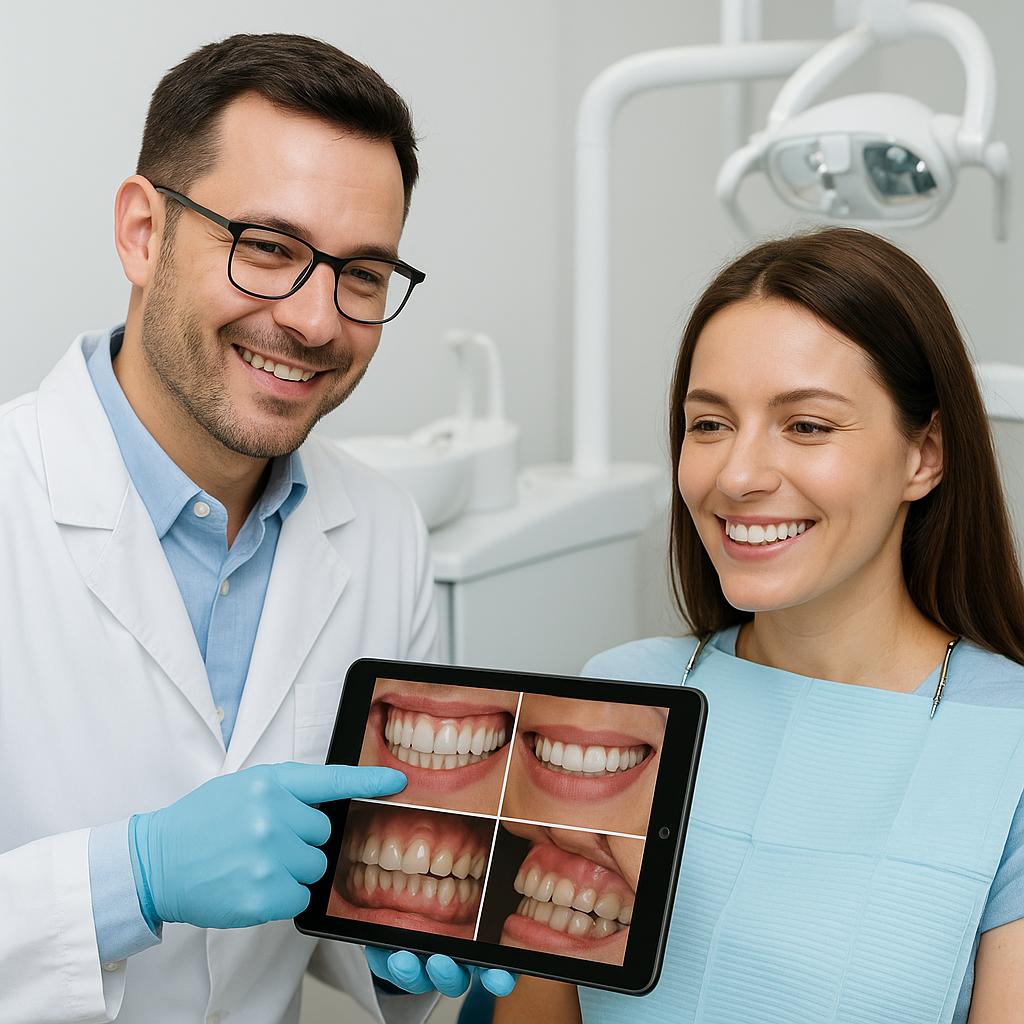
Modern cosmetic dentistry relies on technology and customised techniques to improve each person’s smile. These advancements help us plan, visualise, and create attractive and functional results that fit individual needs.
Digital Smile Design
We use Digital Smile Design (DSD) to plan treatments with accuracy. With DSD, we take digital photos and 3D scans of a patient’s teeth and face.
This data lets us map out every detail, from tooth shape to overall symmetry. DSD software creates a digital outline for changes to the smile.
It helps us communicate clearly with patients, showing options and expected outcomes before doing any work. This reduces surprises and builds trust.
Using DSD, we design personalised treatment plans that can combine veneers, crowns, and whitening for a unified look. It supports both cosmetic and function needs.
These methods allow for higher precision and customisation in every step of the process. Some clinics now use DSD along with 3D printing for guides and models.
Smile Simulation
Smile simulation gives our patients a clear look at what their future smile could be. Through digital imaging, we overlay proposed changes onto photos or digital scans.
This simulation is interactive. We can alter tooth colour, length, and alignment in real time.
It provides a visual reference, helping patients choose changes that suit their features. Patients are more involved in the process when they can see possible results firsthand.
This makes it easier for them to share preferences and make decisions. Smile simulation blends technology with personalised care, making the treatment process more collaborative and predictable.
With today’s advanced systems, virtual representations of smiles are more realistic than ever.
Smile Analysis and Personalised Planning
Smile analysis begins with a detailed review of dental records, facial features, and bite alignment. We consider how teeth, gums, and lips fit together and how a smile matches a person’s face.
Personalised planning uses this information to build a tailored roadmap for treatment. We focus on both aesthetics and function, considering factors like gum line curves, tooth proportions, and the patient’s oral health.
Key steps in personalised planning include:
- Analysing facial symmetry
- Measuring tooth size and shape
- Assessing gum health
- Customising colour and alignment options
This thorough planning leads to predictable and pleasing outcomes. By taking a personalised approach, we offer solutions that not only improve appearance but also promote long-term oral wellness.
Innovative Materials and Techniques
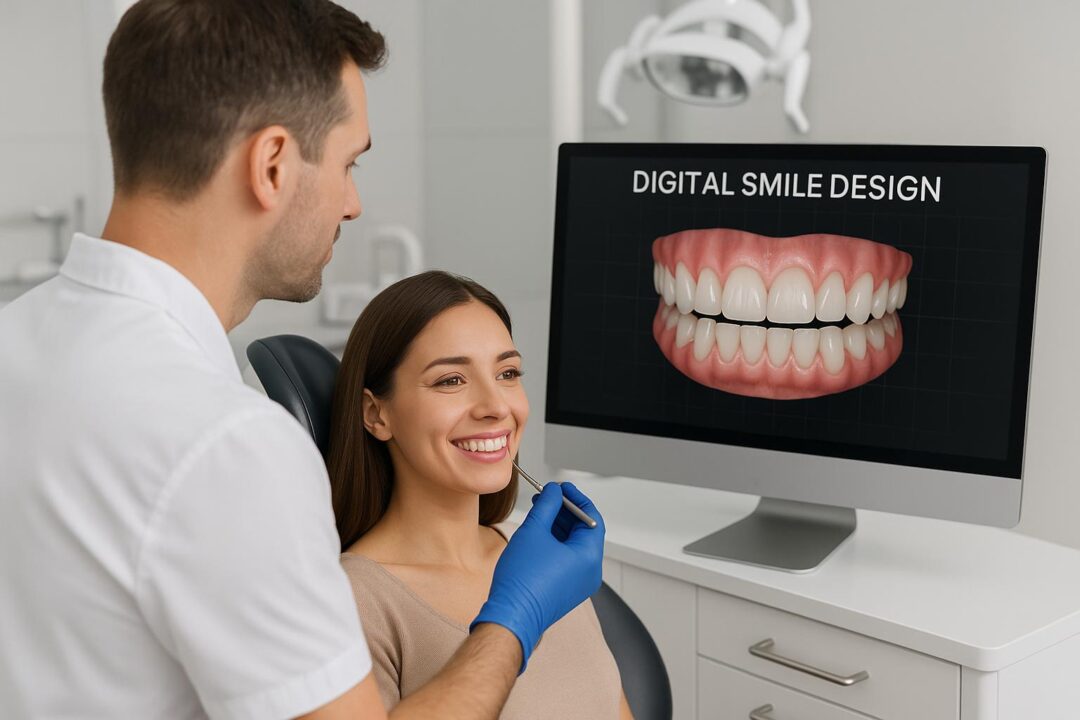
Cosmetic dentistry in 2025 is shaped by new materials that are both safer for patients and better for the environment. Advances in dental technology and our focus on sustainability are changing how we restore and improve teeth.
Composite and Biodegradable Materials
We are now using composite materials that mimic the look and strength of natural teeth. Composites have improved in colour matching and durability, making them ideal for fillings and bonding.
Many practices offer biodegradable materials for certain restorations. These materials break down safely in the environment without harming natural ecosystems.
Key benefits of modern composites and biodegradable options:
- Improved aesthetics with seamless blending.
- Higher resistance to stains and fractures.
- Reduced impact on the environment.
Dentists also employ fast-setting composites, which shorten treatment times and increase patient comfort. These materials are safe, non-toxic, and adaptable for both minor and major cosmetic work.
Learn more about new developments in composite and biodegradable options.
Zirconia and Ceramic Options
Zirconia and advanced ceramics have become the gold standard for crowns, veneers, and bridges. These materials are valued for their strength, natural appearance, and ability to bond securely to teeth.
Zirconia is highly resistant to wear and cracking. This makes it a top choice for patients who grind their teeth or need long-lasting solutions.
Ceramic crowns and veneers reflect light like real enamel, resulting in realistic-looking smiles. With the use of digital smile design, dentists can now create custom ceramic restorations that fit precisely and look natural.
Patients looking for safe, metal-free alternatives will find zirconia and ceramic options especially appealing.
Mercury-Free and Eco-Friendly Practices
We are moving away from mercury-based fillings in favour of mercury-free and eco-friendly dental materials. These options are safer for both the patient and the environment.
Green dentistry promotes the use of recyclable and sustainable products. This includes biodegradable packaging and reduced single-use plastics whenever possible.
Common eco-friendly practices include:
- Using digital X-rays to reduce chemical waste.
- Recycling dental materials where possible.
Choosing eco-friendly cleaning and sterilisation products is also important.
Technological Advancements in Cosmetic Dentistry
We are seeing major progress in cosmetic dentistry, thanks to new dental technology and innovative treatment options. These changes help us offer faster, more accurate, and more personal care for our patients.
3D Printing and Custom Dental Prosthetics
3D printing is transforming how we make dental restorations. We can now design and create crowns, bridges, veneers, and even dentures with a level of accuracy that was not possible before.
Using digital scans, it’s easy to customise prosthetics for each patient, improving both fit and comfort. This technology lets us speed up the process—patients often get their new teeth more quickly, sometimes even on the same day.
Materials have also improved. Today’s printed prosthetics are strong and look natural.
For more details on how 3D printing is changing the industry, visit this guide to innovations like 3D printing in cosmetic dentistry.
3D Imaging and Digital Simulations
3D imaging provides clear, detailed pictures of a patient’s teeth, jaws, and soft tissue. This allows us to plan treatments precisely, reducing risks and surprises during procedures.
Digital simulations help patients see potential results before any treatment begins. For example, smile design software shows how veneers or braces will look, making it easier for patients to decide on their options.
This technology cuts down on guesswork and helps us fine-tune each treatment plan for the best outcome.
Artificial Intelligence Integration
Artificial Intelligence (AI) is now a core part of modern dental technology. AI assists with diagnostics, reading scans, and suggesting the most effective treatment steps.
We use AI-driven tools to spot dental problems that might be missed by the human eye. These tools help us track treatment results over time and personalise care.
AI-powered systems also improve our patient records, making it easier and faster to find and update information.
For a look at how AI is used in smile design and diagnosis, see the latest AI smile design trends in cosmetic dentistry.
Laser Dentistry Applications
Laser dentistry brings both speed and precision to cosmetic treatments. We can reshape gum tissue, remove stains, and prepare teeth without drills or blades.
This approach causes less discomfort, reduces the need for anaesthesia, and often means shorter recovery times. Treatments like teeth whitening and gum contouring are now easier, cleaner, and more reliable.
Lasers also cut down on bleeding and swelling during and after procedures. As part of the latest cosmetic dentistry innovations, laser technology keeps improving.
Minimally Invasive Cosmetic Procedures
New advances in minimally invasive cosmetic dentistry in 2025 offer more comfort, less pain, and quicker recovery. Modern methods now focus on keeping natural tooth structure, ensuring subtler and longer-lasting smile enhancements.
Minimally Invasive Veneers
Minimally invasive veneers allow us to improve the look of teeth with little removal of the natural enamel. These ultra-thin shells are custom made to fit each patient, bonding directly to the front of the teeth without heavy reshaping.
Unlike traditional veneers, we often do not need to grind the tooth down as much. This means less sensitivity and a procedure that often takes less time.
Materials like advanced porcelain and composite resins mimic real teeth closely. They also resist stains better over time.
Techniques have improved so treatment is smooth and outcomes are more natural looking.
Learn more about the innovations in minimally invasive veneers for 2025.
Cosmetic Bonding
Cosmetic bonding is a fast, non-invasive way to correct small imperfections in teeth, such as chips, cracks, or gaps. We use a tooth-coloured composite resin to sculpt and repair areas that need enhancement.
The process does not require needles or the removal of healthy enamel. After preparing the tooth, we simply apply, shape, and harden the material using a special light.
The results blend in seamlessly with natural teeth. Bonding is cost-effective and usually completed in one visit.
It is an ideal solution for minor defects, offering significant improvements without lengthy recovery. Maintenance is straightforward and repairs can be made if needed.
More on current developments in cosmetic bonding is found at The Future of Cosmetic Dentistry: Trends and Expectations.
Enamel Microabrasion
Enamel microabrasion is a gentle technique used to remove superficial stains or spots from the surface of teeth. We use a mild acid and an abrasive substance that polishes away discolourations without harming healthy enamel.
This method is especially effective for patients with issues like fluorosis or superficial white marks. It is usually painless and does not require anaesthetics.
Microabrasion preserves tooth structure and is completed in a single session. After treatment, teeth appear smoother and brighter.
We sometimes combine microabrasion with other methods, such as whitening, for more noticeable results. The procedure is safe for people of most ages.
Gum Contouring Techniques
Gum contouring, also called gum reshaping, is used to correct uneven gumlines or excess gum tissue. In 2025, we use lasers and minimally invasive tools that reduce bleeding, swelling, and recovery time compared to traditional surgery.
Patients with gummy smiles or irregular gums benefit most from these advances. We can gently sculpt the gum tissue to expose more tooth, giving a balanced and attractive smile.
Lasers also sterilise as they cut, lowering the risk of infection. The process usually involves minimal discomfort and most patients return to normal within a day or two.
Our aim is a healthier gumline that complements the natural shape and length of the teeth.
Read further information on modern gum contouring techniques that put patient comfort first.
Orthodontic Innovations and Aligners

Today’s orthodontics is transformed by clear aligners, digital technology, and a focus on both appearance and comfort. Our approach combines customised treatment options with new tools for better results and a better experience for every patient.
Invisalign and Clear Aligners
Invisalign and other clear aligners have changed how we straighten teeth. These systems use a series of nearly invisible trays to gently move teeth into place.
The popularity of clear aligners has grown because they are discreet and removable, making it easier for patients to manage oral hygiene. Treatment usually involves changing aligner trays every one to two weeks, allowing for steady progress without the need for wires or regular adjustments.
Clear aligners, including Invisalign, have expanded to treat mild, moderate, and some complex cases. We can now offer aligners with features such as tooth-coloured attachments for better movement and special trims for a more comfortable fit.
The latest advances in these systems focus on improving efficiency and patient satisfaction.
Digital Treatment Planning
Modern orthodontics uses digital scans instead of traditional impressions. Using advanced imaging, we capture detailed 3D models of each patient’s mouth.
This allows for a higher level of accuracy and personalisation. With digital planning software, we can map out the full course of treatment before the first aligner is made.
We are able to show patients a simulation of their expected final results, helping them stay informed and engaged. Personalised treatment plans are adjusted throughout care as needed.
Digital technology also speeds up the process. 3D models can be quickly sent to dental labs, and 3D printing allows for faster production of aligner trays.
This ensures a better fit and reduces time spent waiting.
Patient Compliance and Comfort
Patient compliance is a key factor in successful aligner treatment. Aligners need to be worn for 20-22 hours daily to work properly.
By being removable, they let patients eat and brush their teeth without restrictions, increasing the likelihood of good oral hygiene and adherence to the treatment plan. Advancements have focused on maximising comfort.
Trays are now made with smoother materials and improved shapes to avoid irritating gums and cheeks. Many systems offer apps or trackers to remind patients when to wear or change aligners, making it easier to stay on track.
We see far fewer issues with mouth sores or broken wires compared to old-fashioned braces. Less frequent dental visits are needed, which means less disruption to daily routines.
With patient comfort and compliance improving, orthodontic results are more reliable and predictable.
The Role of Holistic Approaches
Holistic dentistry puts a strong focus on treating patients as whole individuals rather than just addressing teeth and gums. This approach aims to connect oral health with lifestyle factors, personal beliefs, and overall wellbeing.
Holistic Dentistry Principles
A holistic approach in dentistry means we consider the patient’s full health—physical, emotional, and lifestyle aspects—when planning treatment. Our care extends beyond only fixing teeth; we look at diet, habits, and even stress, as these can all affect oral health.
We also strive to educate patients about preventive care while promoting minimally invasive treatments and safer, biocompatible materials. We collaborate with patients to choose the best treatment options that support both their oral and general health.
In some cases, this can mean avoiding materials like amalgam fillings for those who prefer alternatives. Clinicians may also stay mindful of each person’s comfort and beliefs about dental care, helping them feel heard and respected through every part of the treatment process.
Integrating Oral and Overall Health
Scientific evidence shows a strong link between oral health and the rest of the body, such as how gum disease can affect heart health and diabetes management. In holistic dentistry, we focus on helping patients understand these connections.
For instance, dental professionals provide education on how nutrition, smoking, and stress management impact teeth and gums. Empowering patients to make lifestyle changes is a key part of this approach.
By discussing diet improvements and better daily habits, we support both oral and general health. Holistic dental practices in 2025 often include regular screenings, patient education, and close collaboration with other healthcare providers for a more comprehensive approach to care.
Patient Expectations and Satisfaction
Patients today expect a personalised experience that looks at their full health and addresses their concerns, preferences, and values. Holistic dentistry meets these expectations by offering more than standard treatments.
We take time to explain the choices, risks, and benefits, leading to better understanding and comfort for patients. This focus on each individual leads to higher patient satisfaction.
A patient who feels listened to and receives advice that fits their lifestyle is more likely to follow through with oral health care at home. Studies suggest patients value dental teams that view them as partners in their care, not just recipients of treatment.
Holistic dental care aims to build trust and strong relationships, making each visit less stressful and more rewarding.
Sustainability and Green Practices in Dentistry
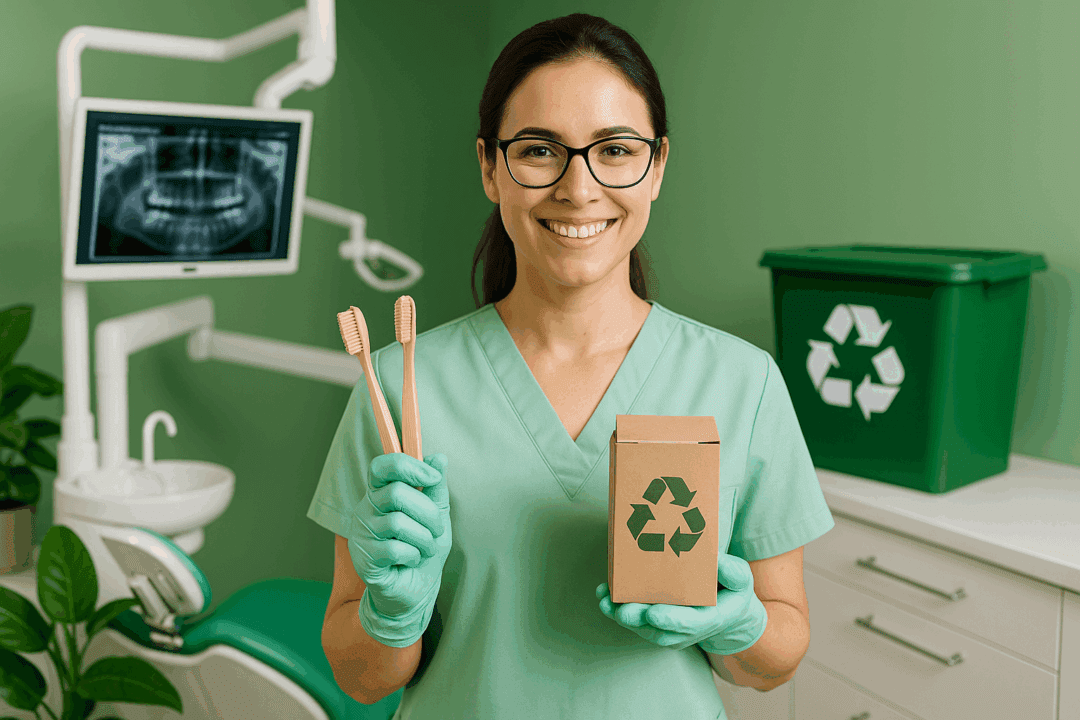
Adopting sustainability in dentistry means reducing negative impacts on the environment while still delivering excellent patient care. By focusing on green dentistry, we help protect natural resources and meet the needs of patients who value eco-friendly choices.
Eco-Friendly Dental Materials
We are choosing more eco-friendly dental materials to limit waste and chemical pollution. Many of us now use composite resins that are mercury-free, instead of traditional amalgam fillings which contain mercury.
This shift cuts down on toxic waste and helps keep our water cleaner. New biodegradable materials are available for items like suction tips, trays, and packaging.
Using these products means less plastic ends up in landfill or the ocean. Some dental practices also use reusable metal instruments and digital impressions to avoid single-use plastics and paper.
We can find products and supplies with minimal or recyclable packaging from responsible suppliers. For patients, we offer oral care products like toothbrushes and floss that are made from sustainable materials such as bamboo or compostable fibres.
These steps allow us to keep our practice modern while still being mindful of our environmental impact. Read more about green dentistry in this detailed article.
Sustainable Clinic Operations
We are committed to sustainable clinic operations by improving energy efficiency and minimising environmental harm. Installing LED lighting, using energy-efficient dental equipment, and setting up timed heating and cooling systems all help reduce electricity use.
Monitoring water consumption and switching to water-saving dental units are important actions as well. Waste management is another area where we have made progress.
We sort and recycle materials whenever possible, and we use biodegradable or recyclable items for patient care, such as paper cups or compostable bibs. Staff training includes best practices for sustainability and efficient use of materials.
We encourage patients to use digital forms and communication, reducing paper and printing. By scheduling appointments and treatments more efficiently, we lower the carbon emissions from travel, which is a major source of environmental impact.
Frequently Asked Questions
Cosmetic dentistry in 2025 uses cutting-edge technology and methods. New tools and approaches help us create natural-looking, effective, and long-lasting results for more people than ever before.
What advanced techniques are now available for teeth whitening?
We can now use advanced LED light systems paired with safe whitening agents to give brighter results with less sensitivity than older treatments. At-home whitening kits are also more personalised, offering custom-fit trays that improve comfort and coverage.
Some systems use smart apps to track progress and help us achieve the exact shade our patients want.
How can digital dentistry improve smile makeovers?
Digital smile design lets us preview results before starting any procedure. We use 3D scans to create virtual models, which allow for exact planning and fewer mistakes.
Our patients can see potential changes on a screen, making it much easier to decide on their treatment goals and outcomes. These digital tools speed up the process and increase satisfaction.
Learn more about digital smile design in cosmetic dentistry.
What are the long-term benefits of choosing veneers?
Veneers resist staining much better than natural teeth. They also last for many years with proper care, making them a smart investment for smile improvements.
Veneers can strengthen teeth that are worn down or chipped, and they create a natural appearance. Choosing minimally invasive veneers is now possible, reducing the amount of enamel removal needed.
How does one maintain their dental implants for longevity?
We recommend daily brushing and flossing, plus regular dental check-ups. Using a soft toothbrush and non-abrasive toothpaste prevents damage.
Patients should avoid chewing hard objects and smoking, as these habits can weaken implants over time. Good oral hygiene helps keep the gums healthy around the implant.
What non-invasive procedures are trending in cosmetic dentistry?
Minimally invasive treatments are more popular. Many patients ask for clear aligners to straighten teeth without wires or brackets.
There are resin bonding techniques that repair chips and gaps quickly, often in one visit. Tooth contouring and advanced whitening systems are also non-surgical options with little to no downtime.
Find out more about non-invasive cosmetic dentistry trends.
What should one consider before undergoing a full mouth reconstruction?
We advise people to have a full assessment to check their gums, jaw, and bite.
Discuss all treatment options and understand the time, cost, and likely results.
Assess your oral health habits, as the success of large treatments depends on good care at home and follow-up visits.

